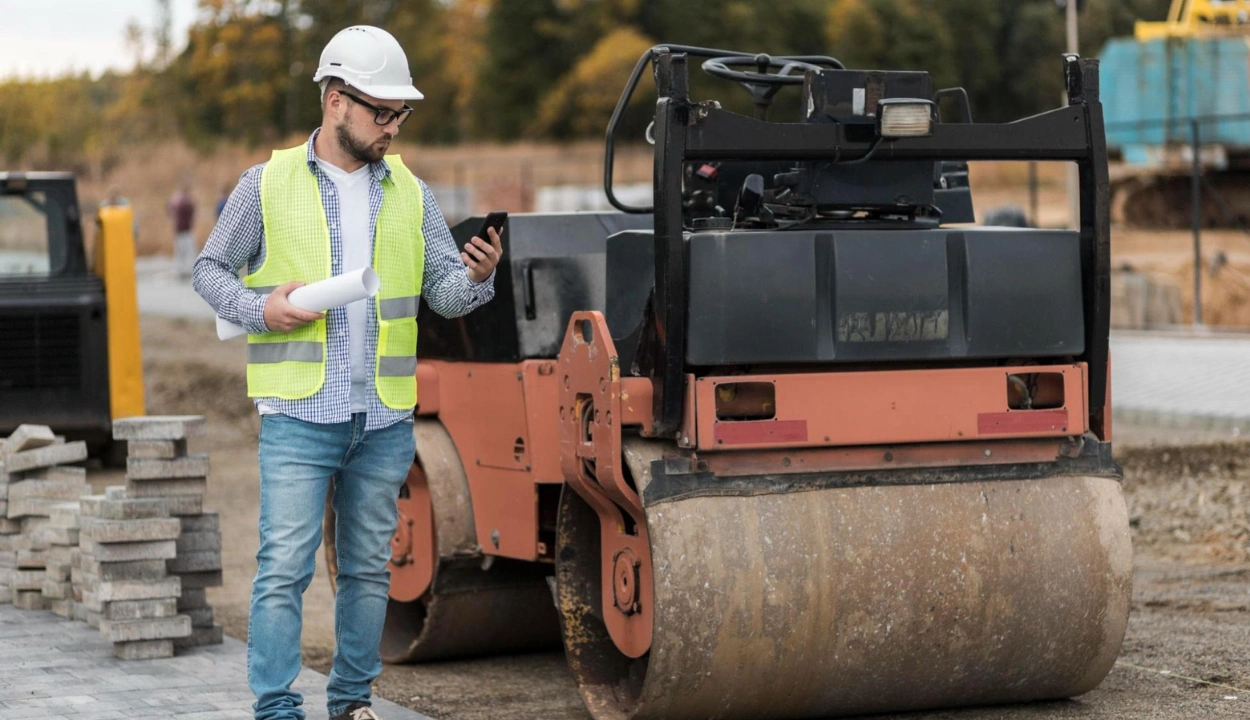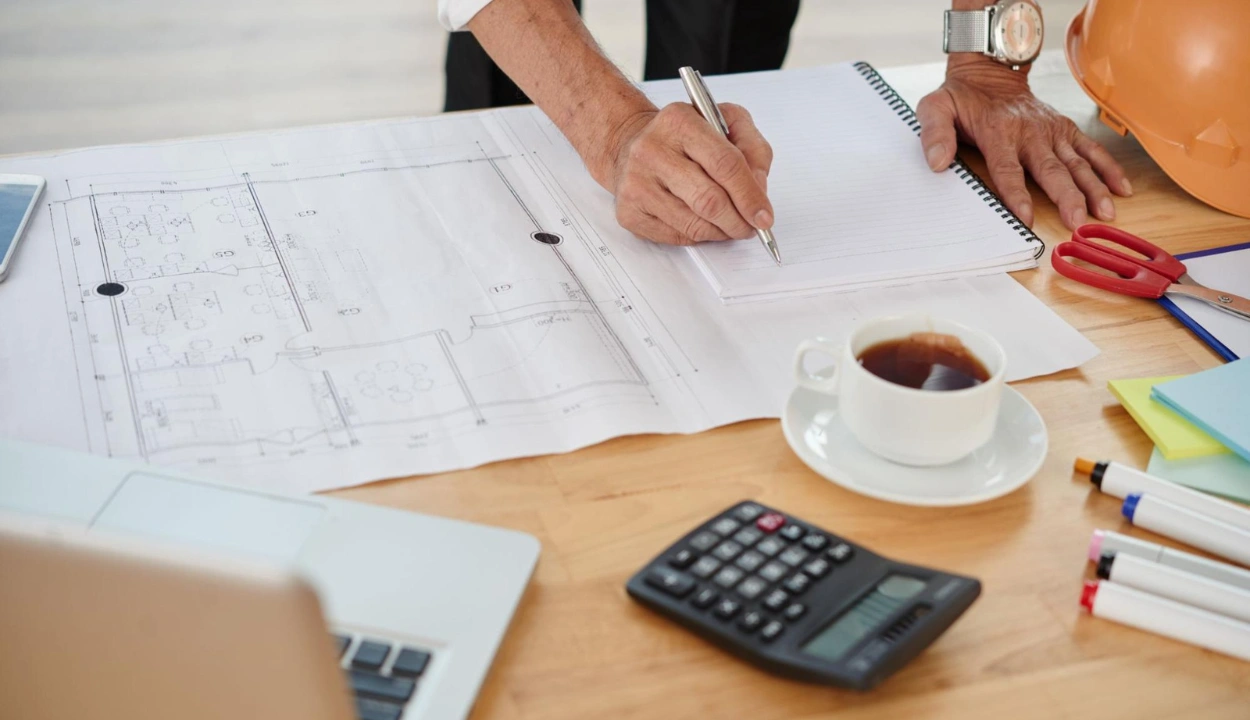What is Lean Construction? Definition & Principles
Have you ever found yourself crossing a construction site by reflecting on the reason why so many projects tend to take time, cost more than expected or waste so much equipment? You are not alone; The ineffectiveness of construction has been recognized for decades.
But there is always a good way to build, plan, execute and delivery of the project
The philosophy of construction Lean emphasizes the elimination of waste, improving communication and transparent collaboration between the teams.
By adopting its principles, construction projects are not only completed faster, but they also generate less waste and are more useful to everyone involved.
Curious about how it works? Let’s explore what lean construction is, its history, its core principles, and practical steps to implement it today.
What is Lean Construction?

At the heart of lean construction is doing more with less - a mindset and a methodology for optimizing workflows, eliminating waste, and creating value for all participants - be they a contractor, project manager, or client.
For example, imagine a typical construction site where delays happen because materials are delivered too early, sitting idle, or too late, holding up progress.
With lean building construction, these issues are resolved by planning materials to arrive just-in-time (JIT), reducing storage costs and delays.
Globally, the construction sector generates 1.4 billion tonnes of waste annually.
Implementing lean construction techniques, like efficient material use and minimising rework, could reduce this figure significantly, making construction more sustainable.
A Brief History of Lean Construction
The roots of the lean construction date back to the broadest slim philosophy, which originated in the manufacturing sector, in particular through the Toyota production system (TPS).
In the 1950s, Toyota revolutionized the production processes giving priority to the efficiency, reduction of waste and the value of the customer.
At the beginning of the 90s, these ideas made their way in the construction sector, led by researchers such as Lauri Koskela and organizations such as the Lean Construction Institute (LCI).
The goal was clear: to apply the principles based on the efficiency of production to the construction sector notoriously complex and heavy.
Today, Lean Construction has become a globally recognized methodology, guiding the teams towards the realization of higher quality projects in time and in the budget.
Lean Construction Principles

Five basic elements underpin lean construction:
- Determine Value: Recognise the customer's top priorities and concentrate on meeting them.
- Draw A Value Chain Map: Examine the process to find wasteful areas (e.g., labour, equipment, or time).
- Establish A Constant Flow: Make sure there are no delays and that work moves smoothly from one stage to the next.
- Create Pull Systems: To prevent overproduction, only produce or distribute what is required at the appropriate time.
- Strive For Ongoing Development: To increase productivity and outcomes, review procedures frequently and make necessary modifications.
How Can Teams Implement Lean Construction Philosophy?

Lean construction implementation involves systematic procedures that assist teams in putting the idea into practice, not just a shift in mindset.
This is a detailed tutorial:
1. Assess the Current Process
- Begin by evaluating your current project workflows. Identify inefficiencies such as delays, unnecessary material usage, or miscommunications.
- Use tools like Value Stream Mapping to visualize waste points.
2. Engage Stakeholders
- Involve all stakeholders involved early on in the planning phase to promote cooperation.
- Make it a priority for clients, architects, contractors, and subcontractors to communicate openly.
3. Set Clear Goals
- Define measurable goals for waste reduction, improved timelines, and cost savings.
- Align these goals with client expectations and project objectives.
4. Implement Pull Planning
- Use pull planning to schedule tasks based on the needs of downstream activities.
- Create reliable workflows by focusing on delivering what is required next.
5. Focus on Continuous Improvement
- To assess progress and make any process adjustments, schedule frequent review meetings.
- Use metrics to measure success and identify areas for further improvement.
6. Leverage Technology
- Streamline planning and communication by implementing digital tools such as Building Information Modelling (BIM).
- Make proactive use of data analytics to anticipate and reduce hazards.
Why Lean Construction Matters Today

By 2030, it is anticipated that building expenditures would total $15.2 trillion worldwide.
With the stakes so high, inefficiencies become a serious problem rather than a minor annoyance.
By addressing these inefficiencies head-on, lean construction ensures that projects are completed on schedule, under budget, and with the least amount of waste possible.
Construction teams may develop faster and more effectively by adopting lean concepts, which will guarantee long-term value for stakeholders and clients alike.
Lean Construction Principles: The Foundation of Efficient Building Practices
The leans principles in construction standards have revolutionized the building procedure, helping groups cut waste and maximise fee.
By way of applying vital gear along with the closing Planner machine (LPS), price circulation Mapping (VSM), and visual control, you may substantially beautify the efficiency and reliability of your production initiatives, permits explore how these Lean methods can streamline your workflow and enhance project consequences.
Last Planner System and Pull Planning

The Last Planner System (LPS) challenges traditional construction scheduling by giving control to those directly involved in the work.
This collaborative approach improves project reliability, increasing the on-time completion rate from 54% to over 85%.
During pull planning sessions, teams work backwards from project milestones, taking all dependencies and constraints into account.
This method guarantees that schedules are practical, possible, and focused on doing away with bottlenecks, which leads to smoother venture delivery.
Value Stream Mapping (VSM)

Value Stream Mapping (VSM) provides a visual representation of your entire construction process from design to delivery.
It helps identify value-added activities and highlights areas where waste occurs. By mapping both information and material flows, your team can:
- Eliminate disconnected processes and unclear communication.
- Reduce delays and excessive costs.
- Improve the customer experience by optimising workflow.
- This visualisation allows teams to pinpoint inefficiencies and implement corrective measures quickly.
Visual Management and 5S Implementation

Visual Management and 5S principles improve organisation and safety on construction sites.
The 5S methodology—Sort, Set in order, Shine, Standardize, and Sustain—ensures your team keeps the site clean and efficient, reducing waste and improving safety.
By using visual tools like color-coded systems, Andon lights for quality issues, and standardized workstations, teams can quickly identify problems and take corrective actions on the spot, making the process more transparent and responsive.
Waste Reduction Strategies in Construction
The construction industry generates millions of tons of waste annually.
Implementing Lean construction methods helps reduce waste and enhances eco-friendly practices.
The framework identifies eight types of construction waste, including:
- Transportation: Unnecessary movement of materials and equipment.
- Inventory: Excess materials stored on-site.
- Motion: Inefficient movement of workers.
- Waiting: Delays between activities.
- Overproduction: Producing more than needed.
- Over-processing: Unnecessary steps or refinements.
- Defects: Errors requiring rework.
- Skills: Underutilized human potential.
By focusing on waste elimination, teams can streamline operations and minimise environmental impact.
Practical Waste Elimination Techniques

To effectively reduce waste, consider three main strategies:
- Planning and Design: Accurate estimation and prefabrication optimise material usage, while environmental management plans can reduce waste by up to 20%.
- Material Management: Designated storage areas and resilient inventory systems prevent material degradation and reduce waste.
- Digital Integration: Construction management software helps track inventory, improve communication, and support waste management decisions.
Measuring Waste Reduction Impact

Tracking the impact of waste reduction initiatives is crucial for ongoing success.
Key metrics include:
- Quantitative: Volume of waste generated, percentage of materials recycled, and cost savings.
- Qualitative: Team compliance, communication effectiveness, and quality improvements.
By incorporating Lean tools like LPS, VSM, and Visual Management, and focusing on waste reduction, your team can improve project efficiency, reduce costs, and increase profitability—all while minimising your environmental footprint.
Lean Construction's Key Techniques
- Last Planner System (LPS): A scheduling system that relies on cooperation between people involved in the timely completion of activities.
- Just-in-Time (JIT): Brings the materials precisely when needed so that waste does not build up and storage costs are reduced.
5S (Sort, Set in Order, Shine, Standardize, Sustain): A method of organizing in the working environment to increase efficiency while decreasing wasted time.
Benefits of Lean Construction: Backed by Data

Still wondering if lean practices are worth the effort? The benefits are undeniable, and here's how lean construction can transform your projects, backed by data-driven insights:
1. Increased Efficiency
Lean construction focuses on streamlining processes and eliminating unnecessary tasks. By optimising workflows and removing inefficiencies, it can lead to significant reductions in project timelines. In fact, studies show that implementing lean practices can reduce project durations by up to 30%. This faster turnaround time is not only a win for project owners but also reduces overhead costs and allows for faster delivery of projects to clients.
2. Improved Quality
One of the key principles of lean construction is the pursuit of continuous improvement. By consistently assessing and refining processes, construction teams can ensure that each phase of the project meets higher quality standards. With lean, the focus shifts to producing work that adds value to the client, leading to fewer rework instances.
3. Cost Savings
Lean construction helps to identify and eliminate waste, both in terms of time and materials. By improving resource allocation and reducing excess, projects can see a reduction in costs. This results in significant financial benefits over time, especially when applied across multiple projects.
4. Sustainability
Lean construction isn't just about cutting costs and increasing efficiency; it's also about contributing to environmental sustainability. Lean principles align well with green building goals. For instance, optimising material use, reducing waste, and improving resource management all contribute to a reduction in landfill waste, making projects more sustainable and reducing their carbon footprint.
Lean construction brings measurable improvements in efficiency, quality, cost savings, and sustainability.
Backed by data, these practices are proving to be not just a trend, but a transformative approach to construction equipment management.
The Role of Clue in Driving Lean Success

As construction becomes increasingly digital, tools are at the forefront of the Lean Construction revolution.
Clue’s advanced features help project managers track progress, manage resources, and make data-driven decisions.
Here’s how Clue aligns with Lean Construction principles:
- Real-Time Analytics: Clue provides instant insights into project performance, helping teams identify bottlenecks and inefficiencies.
- Inventory Management: The platform streamlines asset tracking, reducing waste and preventing overstocking.
- Stakeholder Collaboration: With features like shared dashboards and communication tools, Getclue enhances teamwork and ensures everyone stays aligned.
Conclusion
Lean Construction is more than a trend; it's the future of the construction industry.
By focusing on efficiency, collaboration, and continuous improvement, it offers better results for everyone involved.
From reducing costs and timelines to delivering sustainable solutions, the benefits of lean practices are too significant to ignore
Ready to take your construction projects to the next level?
Start with Clue—the perfect tool for simplifying project management and embracing lean construction techniques.
With real-time data and powerful insights, GetClue helps you deliver projects faster, smarter, and more profitably.
Take control of your construction operations today. Clue to revolutionise your project management, reduce costs, and achieve exceptional results.
FAQs
What is the Last Planner System (LPS) and how does it relate to Lean Construction?
LPS is a planning and control system that focuses on worker reliability and pull planning. It's a core element of Lean Construction as it emphasizes worker involvement, reduces uncertainty, and improves project predictability.
How does Building Information Modeling (BIM) support Lean Construction principles?
BIM facilitates better coordination, visualization, and communication among project stakeholders. This helps to identify and resolve potential problems early on, minimize rework, and improve overall project efficiency – all key principles of Lean Construction.
How can Clue help track progress and improve lean construction projects?
Clue, a powerful construction planning and management app, can help. Its features like real-time project tracking, customizable dashboards, and progress reports provide valuable insights to identify bottlenecks and optimize workflows.
How can I minimize waste and optimize resource allocation?
Clue's resource management features allow you to track material usage, equipment availability, and labor costs in real-time, enabling you to optimize resource allocation and minimize waste.
Transform Your Equipment Management












